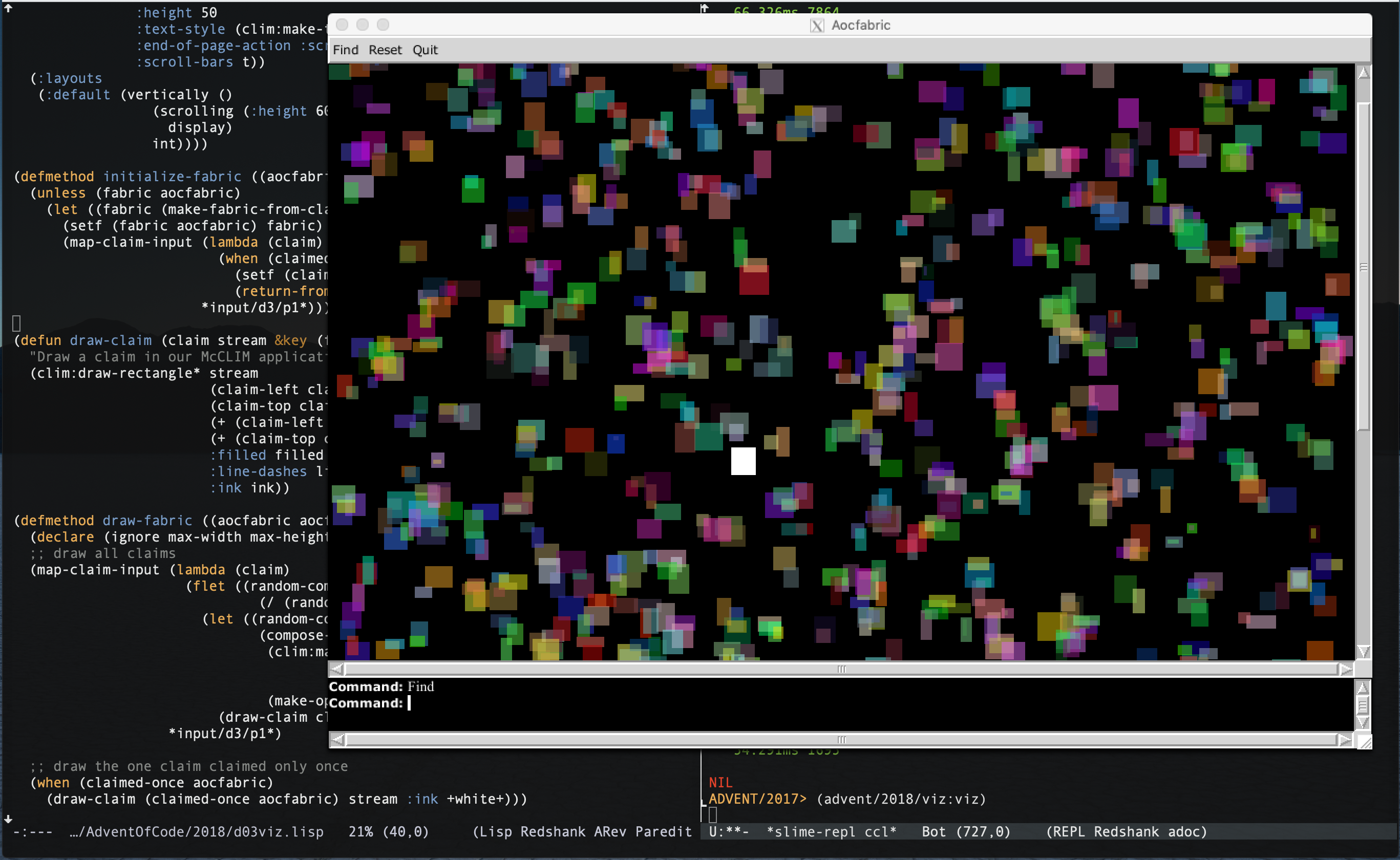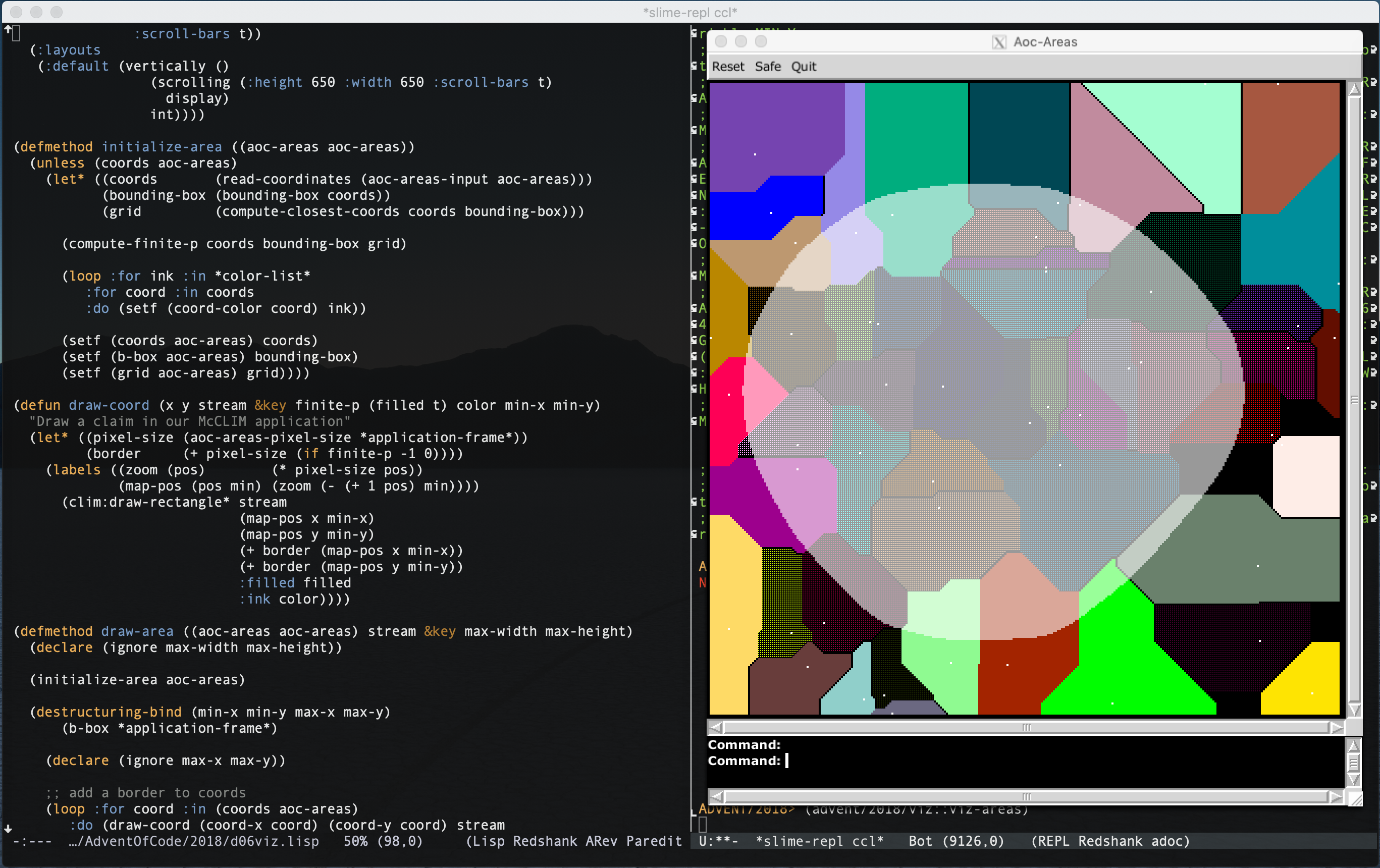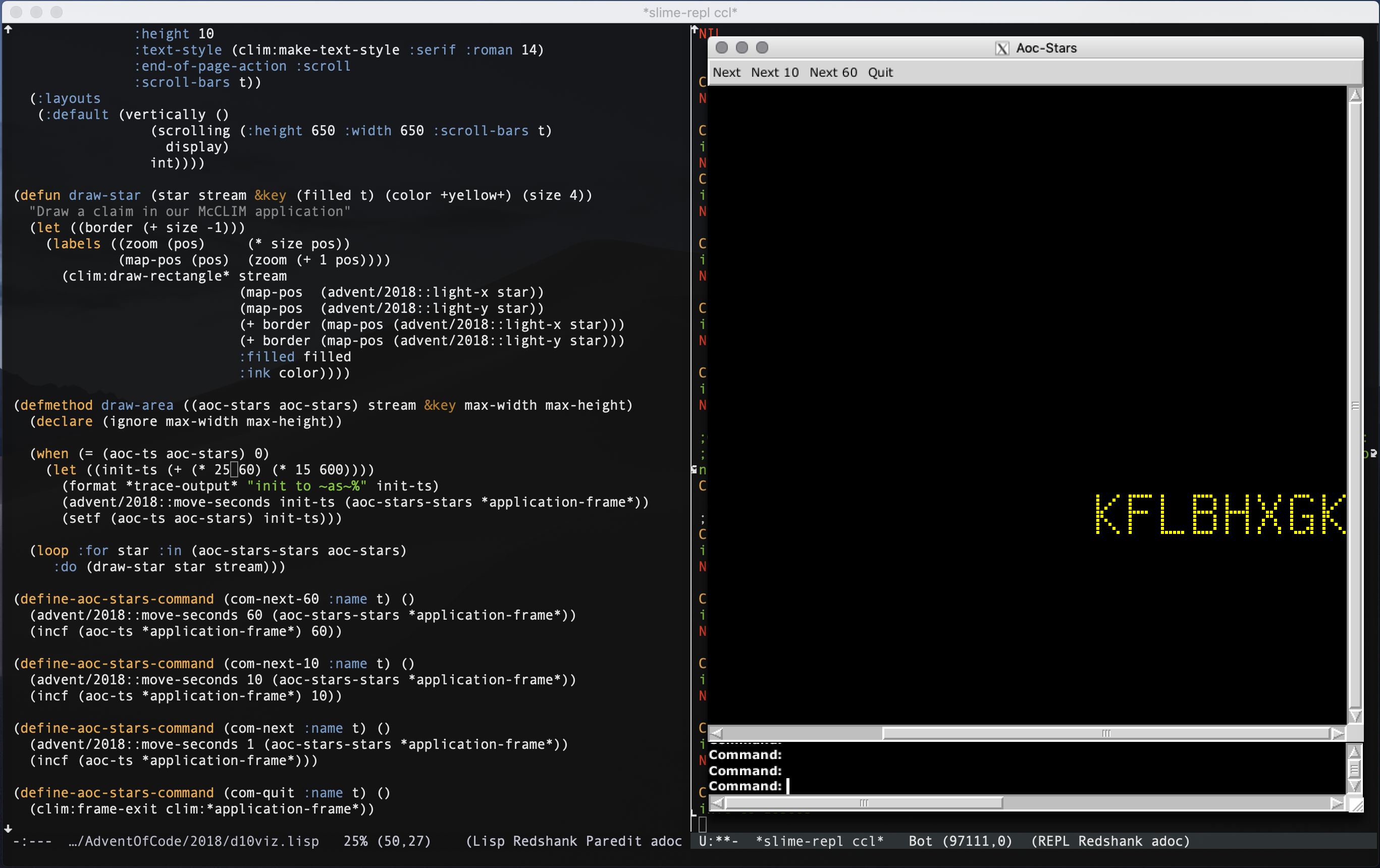This repository contains my implementation of the Advent of Code puzzles, using Common Lisp. It's not that I'm so proud that I want to share them, it's more like I'm having fun and I might learn new tricks by exposing this code.
The intend of my playing of this game is to have fun and do the puzzles quickly, mind you. I'm not going to extend any serious thoughs about programming best practices here, so it will mostly show my own reflexes and habits. Otherwise it's not fun anymore, is it?
I prepared some tooling to output a summary of my puzzles timing and results here, for interested readers having a quick overview. My intend is to keep that up to data running it again each day.
I'm using Clozure Common Lisp Version 1.12-dev DarwinX8664 for those hacks, it's known that SBCL might give a boost to the results, or in other situations maybe ECL or clips would be even faster. Should I care? well I certainly don't.
PARSER> (advent/2018:summary)
Day 1: Chronal Calibration
Puzzle 1: sum of frequency changes
3.958ms 520
Puzzle 2: first frequency read twice
699.040ms 394
Day 2: Inventory Management System
Puzzle 1: checksum of box ids
4.857ms 5000
Puzzle 2: common letters in box ids one letter apart
9.060ms ymdrchgpvwfloluktajxijsqmb
Day 3: No Matter How You Slice It
Puzzle 1: find squares claimed more than once
819.373ms 101565
Puzzle 2: find the only claim asked of only once
739.283ms 656
Day 4: Repose Record
Puzzle 1: Most Sleepy Guard, Strategy 1
5.472ms 35623
Puzzle 2: Minute Most Slept by a single guard, Strategy 2
7.761ms 23037
Day 5: Alchemical Reduction
Puzzle 1: Polymer reactions
2.609ms 10250
Puzzle 2: Time to improve the polymer.
100.259ms 6188
Day 6: Chronal Coordinates
Puzzle 1: dangerous, keep away, largest finite area
2132.732ms 4342
Puzzle 2: safe, keep close, within manhattan sum threshold
445.090ms 42966
Day 7: The Sum of Its Parts
Puzzle 1: order instruction steps (dependency graph)
0.330ms ABLCFNSXZPRHVEGUYKDIMQTWJO
Puzzle 2: time to complete steps in parallel with 5 workers
1.728ms 1157
Day 8: Memory Maneuver
Puzzle 1: read software license file
4.990ms 40701
Puzzle 2: value of the root node
2.295ms 21399
Day 9: Marble Mania
Puzzle 1: What is the winning Elf's score?
31.307ms 385820
Puzzle 2: What is the score with 100 times as many marbles?
5293.371ms 3156297594
Day 10: The Stars Align
Puzzle 1: KFLBHXGK
Puzzle 2: 10659s
Day 11: Chronal Charge
Puzzle 1: Find the 3x3 square with the largest total power
22.850ms 243,34
Puzzle 2: Find the square with the largest total power
413351.220ms 90,214,15
Day 12: Subterranean Sustainability
Puzzle 1: sum of indexes of pots with plants after 20 generations
2.283ms 2736
Puzzle 2: sum of indexes of pots with plants after 50000000000 generations
18.050ms 3150000000905
Day 14: Chocolate Charts
Puzzle 1: scores of the ten recipes immediately after 323081
139.835ms 7162937112
Puzzle 2: how many recipes to the left of 323081
12671.771ms 20195890
Day 15: Beverage Bandits
TO BE DONE LATER, lacking motivation for this one at the moment
Day 16: Chronal Classification
Puzzle 1: Count samples matching exactly 3 opcodes
20.406ms 529
Puzzle 2: Run given program with found opcodes
13.033ms 573
Just for the kicks of it, and because I'm nowadays playing around with McCLIM, A GUI toolkit for Common Lisp, here's a visualization I did quickly in 64 lines of Common Lisp code for the Fabrics puzzle:

This time I had a bug where I would find the correct test result but fail to find the correct result when given the input. That was quite puzzling me. I decided I would draw the 2-D areas to get a clue. Oh, that's obvious now, the bounding box computation is wrong. Fix this, recompute, good result!
Thanks McCLIM for making my life easy again ;-)

This puzzle is quite visual as you need to simulate star movements until you can read some letters formed by the stars as if they would be pixels on your monitor. Visual you said? McCLIM to the rescue again!
This time, rather than just offer a mere confirmation or debugging ability to the puzzle, the visualization is used to solve the puzzle. I interactively went through time and reported the number of time I clicked on my fast-forward buttons until I had the perfect frame to see!
